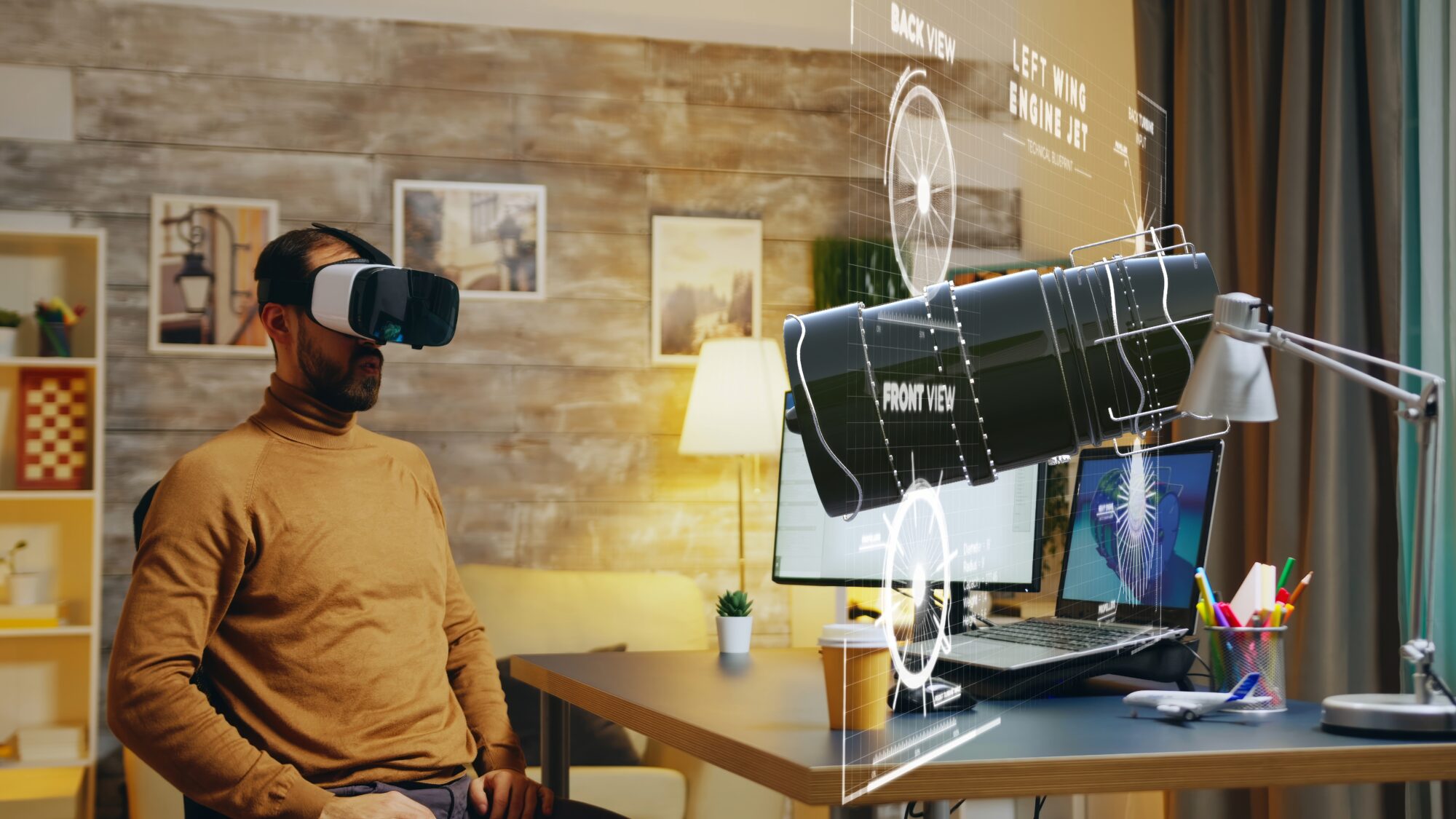By Emilyann Gachko | Designlab
As emerging technologies like Augmented Reality (AR), Virtual Reality (VR), and Mixed Reality (MR) continue to evolve, they present unique opportunities and challenges for UX design. These immersive technologies offer new ways for users to interact with digital and physical spaces, requiring UX designers to rethink traditional design paradigms and consider new dimensions of user experience.
Before delving into UX design considerations, it’s essential to distinguish between AR, VR, and MR.
Augmented Reality (AR)
AR overlays digital content onto the real world, enhancing but not replacing the user’s environment. In AR, context is king. Designing for AR requires an understanding of the user’s physical environment and how to enhance it with digital information meaningfully. Examples of AR use cases:
- Education: SkyView lets users point their mobile devices at the sky, identifying stars, constellations, and satellites. It enhances learning by providing contextual information based on the user’s location and the sky’s current state.
- Navigation: Google Maps Live View uses AR to overlay walking directions onto the real world, improving urban navigation by showing arrows and directions directly on the smartphone screen.
- Retail: IKEA Place lets customers visualize furniture in their own space before buying. Users can see how various items fit in their homes, helping with decision-making.
Virtual Reality (VR)
VR immerses users in a completely digital environment, offering a step away from the physical world and enabling experiences that range from virtual travel to complex training simulations. Apple’s new VisionPro is a great example of VR (although the VisionPro has some AR features as well).
Designing for VR poses unique challenges, primarily around creating an immersive and navigable experience. Since VR environments are entirely digital, designers have the freedom to create complex worlds but must ensure these worlds are accessible and intuitive for users. Examples of VR include:
- Immersive Entertainment: Headsets like the Apple VisionPro and the Meta Oculus mark a significant leap in VR technology. Designers have the opportunity to redefine user engagement by creating environments that are not only visually stunning but also incredibly user-friendly. UX designers can push the boundaries of what’s possible in VR, innovate in designing interfaces that are both intuitive and enriching, and set new standards for UX design in the virtual realm.
- Gaming: PlayStation VR (PSVR) is made specifically for gaming, and UX extends beyond traditional screen interactions, encompassing physical movements, spatial awareness, and multi-sensory feedback. For instance, users are immersed in a 360-degree environment, making traditional navigation cues obsolete. UX designers must create intuitive interfaces that guide users through virtual spaces, ensuring that interactions feel natural and effortless.
- Healthcare: Osso VR provides surgical training through simulations, offering healthcare professionals a safe environment to practice procedures and refine their techniques. UX designers work to ensure that interactions within the VR environment feel natural and intuitive, enhancing the learner’s sense of presence and immersion.
“I’ve found my background in architecture incredibly useful for designing 360° AR user interfaces. Understanding spatial notions and spatial awareness has been a huge help in this journey. My experience in architecture gave me the skills to visualize and create immersive environments that are humanized and easy to navigate. In architecture, user experience in physical spaces is key, and this translates well to AR interfaces.
I’m excited to keep exploring how architecture and XR can come together to create amazing experiences. As noted in this Designlab article, “Designing for AR requires an understanding of the user’s physical environment and how to enhance it with digital information meaningfully.” This insight has been crucial in my work.” -Eduardo Dávalos, Rose Law Group director of metaverse planning and design








